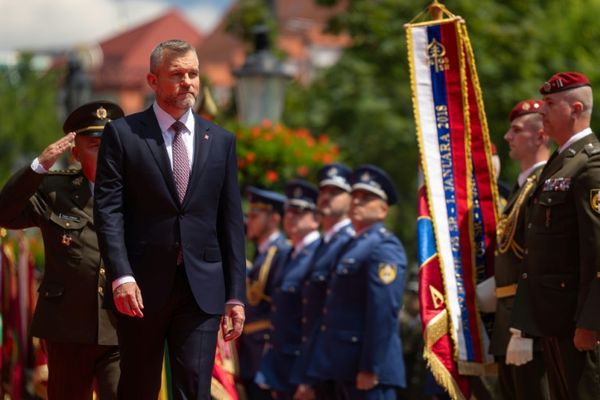
Thirteen-year-old Maada looks up at the woman twice her size, in tracksuit bottoms and trainers, paused at the busy station forecourt of Rotterdam Centraal station.
Her art class is here to see this new statue by British artist Thomas J Price, Moments Contained – not a man who did something, a naked white sylph or someone’s colonial hero but an ordinary-looking black woman. Three weeks after being unveiled, the bronze artwork is part of the school’s curriculum on the Netherlands’ history of colonialism and slavery.
“It’s nice to see something other than a white man in a suit,” said Maada. “I’ve never seen a bronze woman with normal clothes. It’s nice to recognise something and it’s good to put it in this place where everyone can see it.”
Even before Moments Contained was unveiled, it provoked a storm in this port city where 55% of the population has migrant origins. Some opinions were far from welcoming. Microbiologist Rosanne Hertzberger in the NRC daily newspaper called it boring, tokenistic and insincere. “Who knows, maybe this woman is a hero,” she wrote. “Or maybe she’s a bitch … It doesn’t matter. The group she belonged to was marginalised and now she is being overcompensated.”
But at the station the reaction is quite different. Even more than Rotterdam’s infamous Santa Claus statue – “leprechaun buttplug”, in common parlance – it is an attraction. A walking tour inspired by anti-slavery writer Anton de Kom starts at Moments Contained. A businessman pauses, takes a selfie. Tourists circle, making videos, and a young white man leans casually on the clenched fist in the woman’s pocket.
“This is a statue about softness,” said Marjolijn van der Meijden, project leader at Sculpture International Rotterdam, which advises the municipality on art in public spaces. “It doesn’t stand on a plinth and isn’t an exalted representation of someone exotic. It’s just yourself, how you are, not a ‘super’ version. And how many images of black women are there?”

A year ago, 42-year-old Price’s sculpture Warm Shores outside Hackney Town Hall – commemorating the contributions of the Windrush generation – generated a similar warmth. Price said, in a video for his gallery Hauser & Wirth, that Rotterdam’s image is a fictional character intended to connect.
“There’s this sense of containing oneself and psychological tension,” he added. “The scale is to challenge our current understandings of monuments, to critique this idea of status and value within society: who gets to be seen, to be represented.
“It’s trying to make viewers more aware of what we’ve been told about power, materials and value.”
Many in the Netherlands – where on 1 July the king is expected to apologise for his predecessors’ role in slavery – hear the message. Unveiling the statue, Rotterdam mayor Ahmed Aboutaleb said he expected it to become the city’s most photographed image. “She’s not a heroine, a character with an illustrious past,” he said. “She is the future, our future, and this city is her home.” Junior culture minister Gunay Uslu felt a personal connection. “It’s a work that inspires many reactions,” she said. “Maybe you think it’s beautiful, maybe you don’t, but it does something to you.”
Rotterdam, known for its extensive art collection in the public space and public art budget for government buildings, also has a tradition of “anti-monuments”. Dorus Hoebink, a sociologist specialising in cultural heritage at Erasmus University Rotterdam, said these range from Ossip Zadkine’s The Destroyed City, representing the 1940 Nazi bombardment, to Hendrick de Keyser’s statue of Erasmus, which “was extraordinary in the 17th century because it was about an ‘ordinary man’ of modest birth, not someone of nobility or the church”.
Contemporary Rotterdam sculptures tackle female rights and sexual freedoms like Paul McCarthy’s Santa Claus or Kalliopi Lemos’ De Vlecht, referring to women cutting off their long hair, said art historian Miriam Bestebreurtje of Willem de Kooning Academie. For some people, Moments Contained evokes, she said, “white discomfort, incomprehension of the unnamed, the discomfort when the unseen becomes visible”.
Wim Pijbes, director of the Droom en Daad foundation, which donated the work, said it spoke to him the moment he saw it. “I’m an art historian, so I am aware of Black Lives Matter and toppling sculptures,” he said.
“It’s a discussion about good or bad and there’s little room for nuance. Moments Contained is to me addressing the role of sculpture in public. It represents a black young woman, a young woman, a young person. All these categories also dissolve. It’s every woman, it’s us – and it’s just standing on the floor like you and me.”







